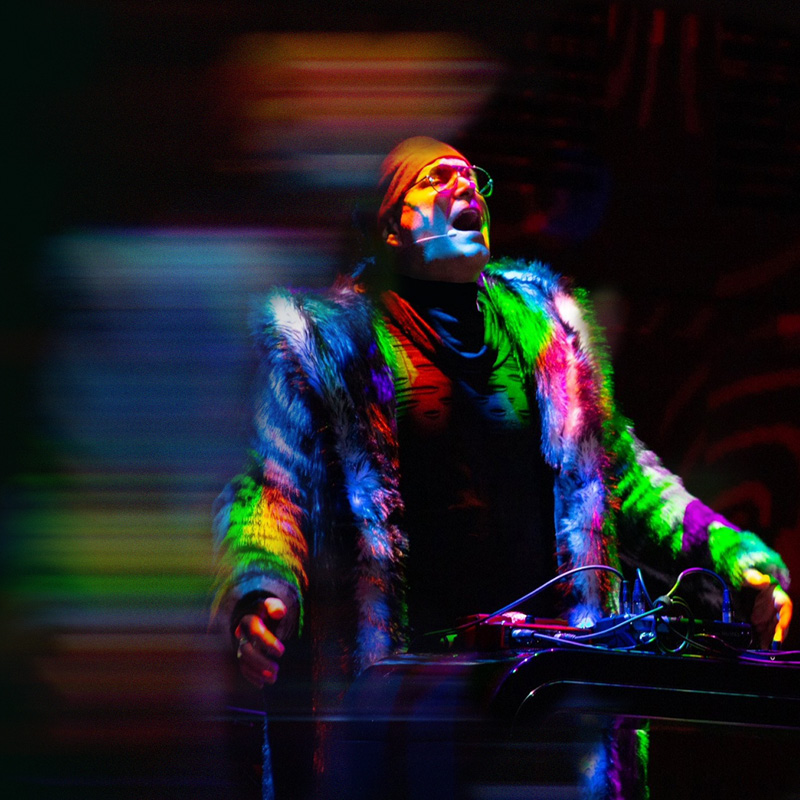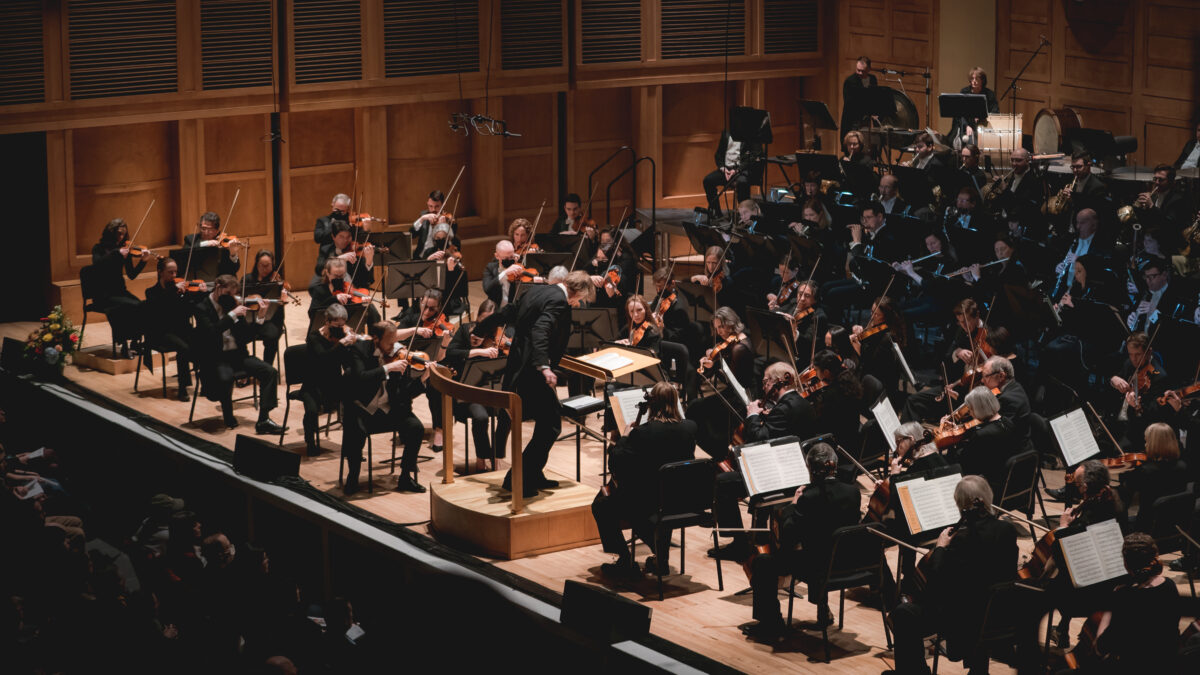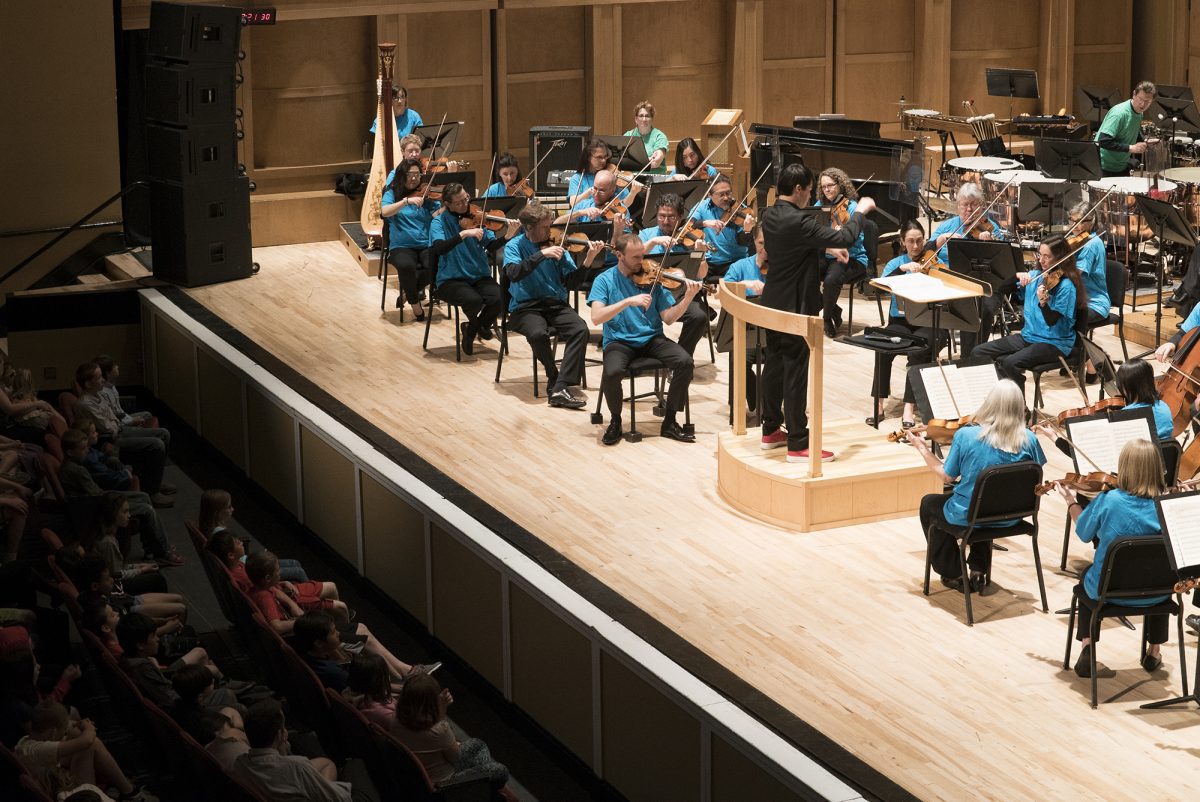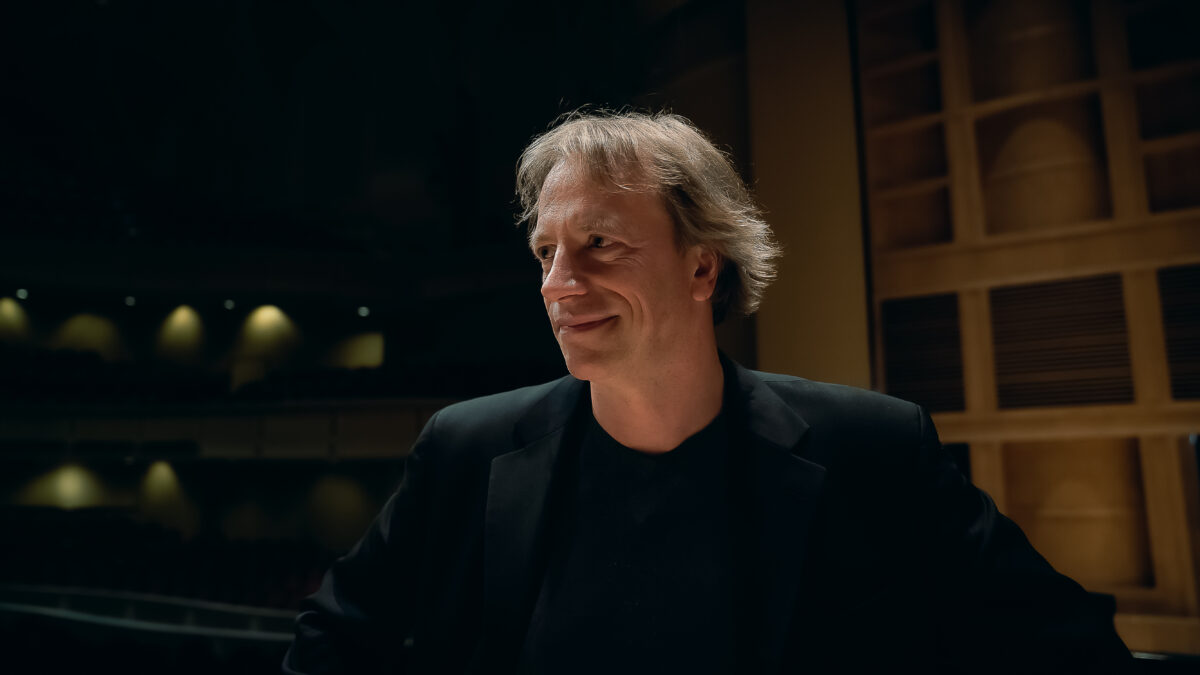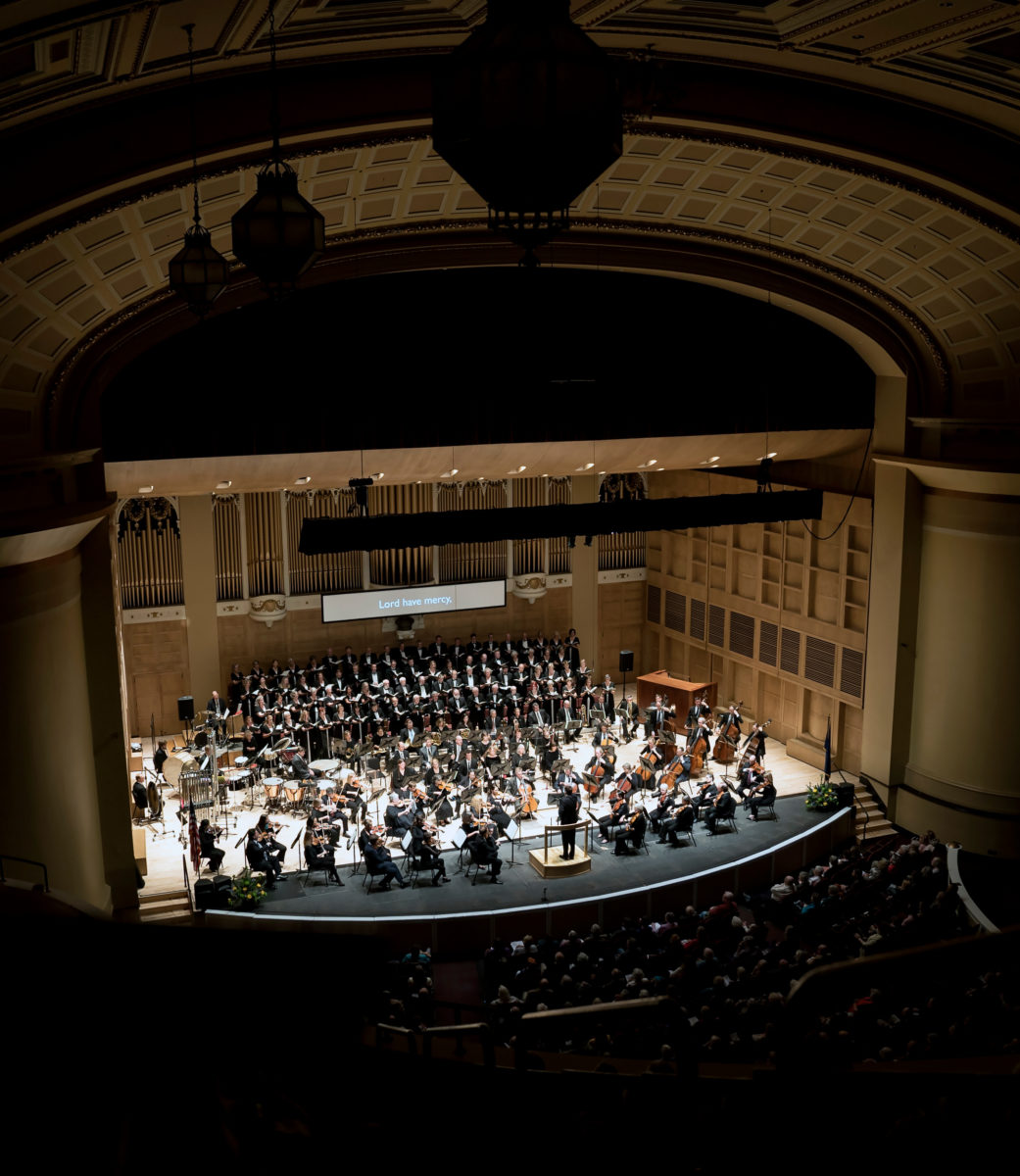The Mighty Kotzschmar Program at a Glance
Sunday, April 21, 2024
Tuesday, April 23, 2024
Music Director Eckart Preu is joined by Portland Municipal Organist James Kennerley for a program of orchestra showpieces that feature or refer to the organ.
The centerpiece is Saint-Saëns’ sprawling third symphony, full of learned counterpoint and yearning melodies. It was written for the Royal Philharmonic Society; Saint-Saëns himself led its premiere in London in May, 1886. It is dedicated to the pianist and composer Franz Liszt, who died shortly after the work’s premiere. This is in fact the only work on this program that actually involves the organ, which is heard in a supporting role in the slow movement and makes a spectacular entrance to signal the start of the finale. Saint-Saëns wrote this symphony to embody what he perceived as the French character, intentionally avoiding the influence of Wagner, whose music was then becoming influential in Paris.
César Franck, on the other hand, readily embraced Wagnerism. His rollicking tone poem Le Chasseur maudit, or “The Accursed Huntsman” was criticized, like much of his music, for its advanced, ambiguous, chromatic harmonies and imposing use of the massed brass section. The obvious reason for Franck’s inclusion in this program is that he was a renowned Parisian organist, culminating his career as professor of organ at the Paris Conservatory.
The Bach/Stokowski Toccata and Fugue in D Minor blends an organ work that may not be by Bach with an early twentieth century transcription for large orchestra by Leopold Stokowski, one of the great showman/conductors in US history. The distinctive opening of this work is nearly as recognizable as the first notes of Beethoven’s Fifth Symphony. This owes something to its prominent placement in the 1940 Disney movie Fantasia, but its brush with pop culture also stems from its use in movies as disparate as Sunset Boulevard, La Dolce Vita and Twenty Thousand Leagues Under the Sea and from its appearance in a number of popular song tracks.
Finally, the luscious slice of music that opens the program is from the opera Notre Dame by Franz Schmidt, set in and around the great Parisian cathedral. The opera derives much of its dramatic thrust from the conflict between religion and worldly life. It may not be too much of a jump to say that the organ itself–the instrument–so important to religious spectacle but equally important at skating rinks and ballparks, can be seen as embodying a similar dichotomy.
– Martin Webster





